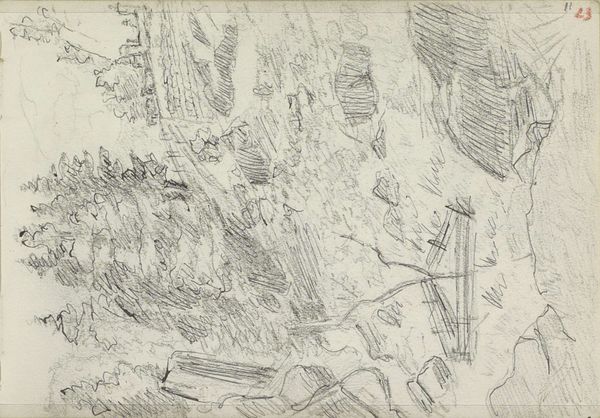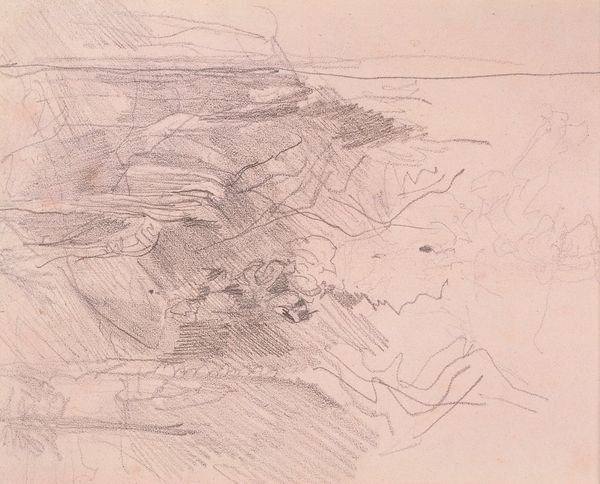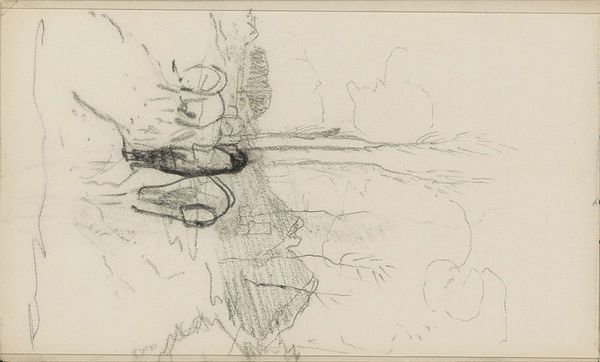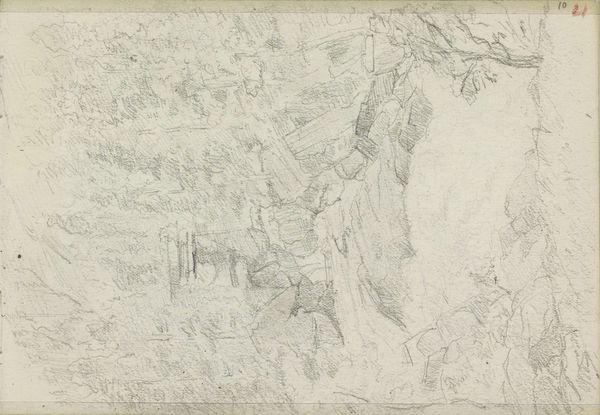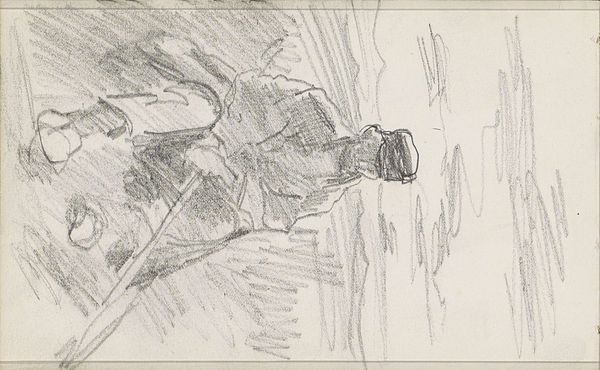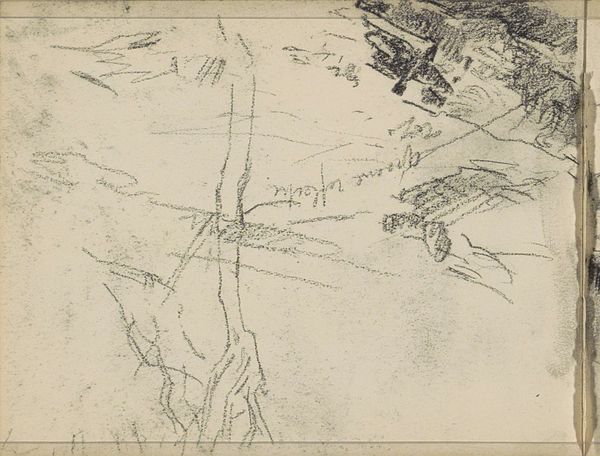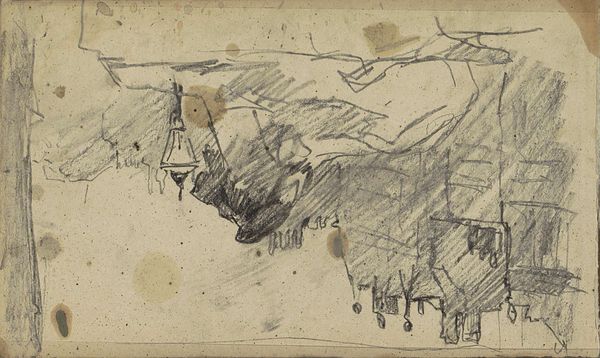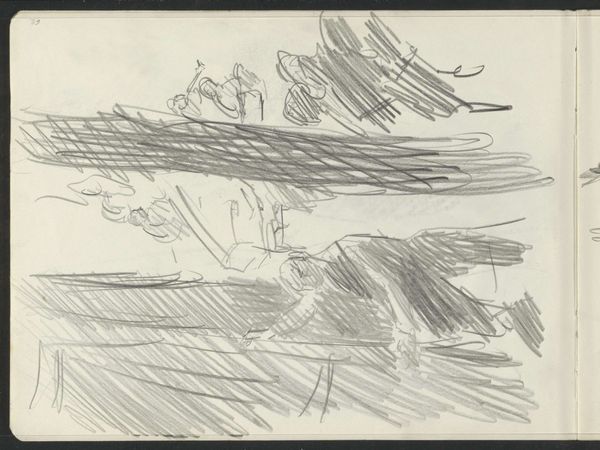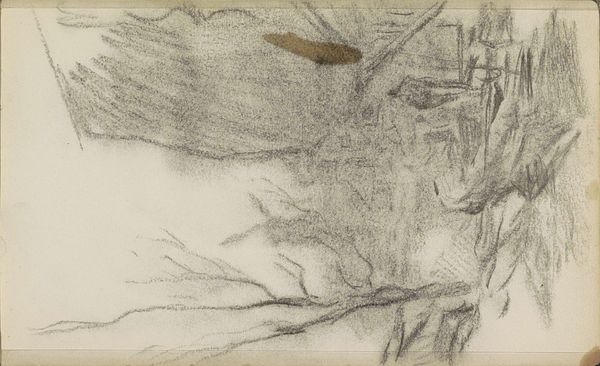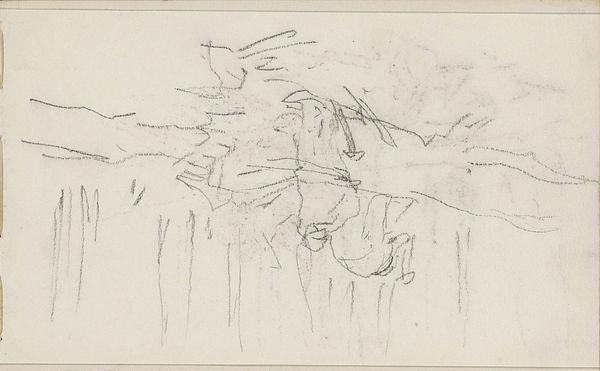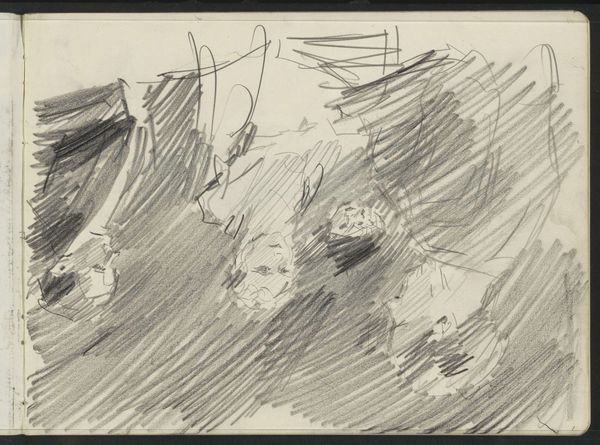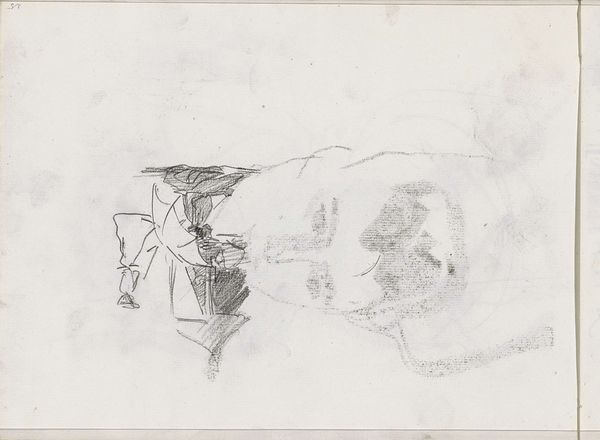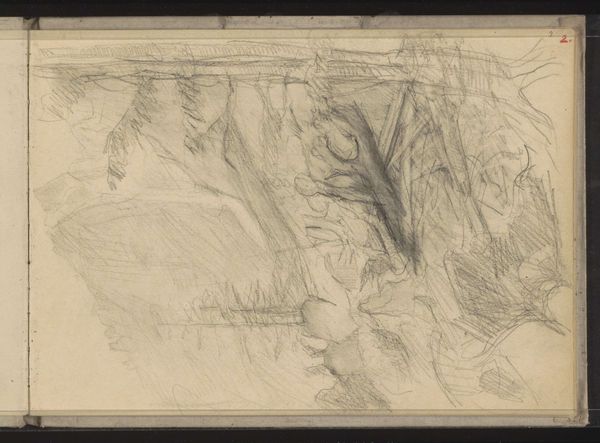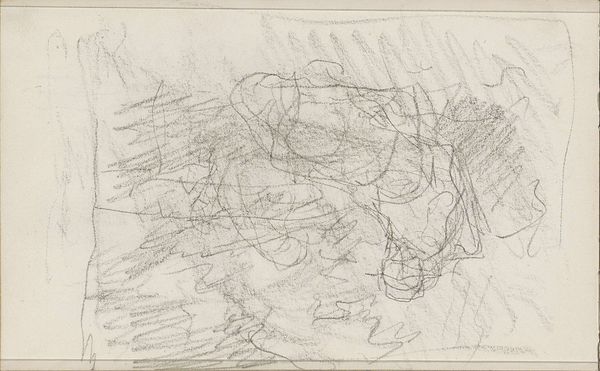
drawing, pencil
#
drawing
#
dutch-golden-age
#
impressionism
#
landscape
#
pencil
#
northern-renaissance
#
realism
Copyright: Rijks Museum: Open Domain
Editor: Here we have Jozef Israëls’ "Bos in Pontresina," a pencil drawing from around 1869, currently held at the Rijksmuseum. The overall impression is rather rough and preliminary, yet somehow captivating in its raw energy. What do you see in this piece, considering its formal qualities? Curator: Immediately, the dynamism of the line work presents itself. Consider how the artist uses hatching and cross-hatching, not to simply describe form, but to actively *construct* space. Note the contrasts in tonal values created through varying the density of pencil strokes, and how this achieves the atmospheric effect, creating the depth and volume. How might the deliberate sketchiness contribute to its overall impact? Editor: It does give a sense of immediacy, as if the artist were capturing a fleeting moment. Is the subject matter less relevant then? Curator: The subject matter offers an armature; yet, the essence resides in the interplay of line, tone, and composition. For example, let's examine the strategic placement of the darker mass on the right side. Its presence amplifies the perspective; thus, leading our eyes to move around and traverse through the image. The lines generate movement and structure, transcending mere representation. The drawing's strength relies heavily on the composition. Editor: I see what you mean. Focusing on those formal elements really elevates my understanding. I wouldn't have considered the drawing as a construction of space rather than a mere landscape. Curator: Precisely. Art often transcends the literal. Examining the syntax of visual elements leads us toward more profound interpretive layers. Editor: Thanks; I’ll keep this in mind from now on!
Comments
No comments
Be the first to comment and join the conversation on the ultimate creative platform.
